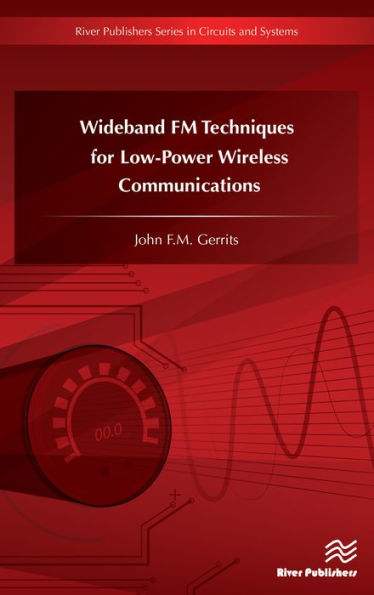Ultra Wideband (UWB) communications are poised to enable short-range applications, such as remote health monitoring (e-health) and home or office automation. Sensor networks are also suitable candidates for UWB since the low radiated power of the UWB transmitter enables low DC power consumption, yielding long battery life and the possibility to use energy scavenging. Size and cost constraints require a low-complexity approach that allows multiple users to share the same RF bandwidth, and offers robustness to interference, frequency-selective multipath and antenna mismatch. Wideband FM Techniques for Low-Power Wireless Communications presents research and applications that have taken place in UWB Communications over the past years. This book is being published posthumously in agreement with the authors’ former colleagues from both the Swiss Center for Electronics and Microtechnology (CSEM) and Delft University of Technology in The Netherlands.
1145850821
Wideband FM Techniques for Low-Power Wireless Communications
Ultra Wideband (UWB) communications are poised to enable short-range applications, such as remote health monitoring (e-health) and home or office automation. Sensor networks are also suitable candidates for UWB since the low radiated power of the UWB transmitter enables low DC power consumption, yielding long battery life and the possibility to use energy scavenging. Size and cost constraints require a low-complexity approach that allows multiple users to share the same RF bandwidth, and offers robustness to interference, frequency-selective multipath and antenna mismatch. Wideband FM Techniques for Low-Power Wireless Communications presents research and applications that have taken place in UWB Communications over the past years. This book is being published posthumously in agreement with the authors’ former colleagues from both the Swiss Center for Electronics and Microtechnology (CSEM) and Delft University of Technology in The Netherlands.
42.73
In Stock
5
1

Wideband FM Techniques for Low-Power Wireless Communications
218
Wideband FM Techniques for Low-Power Wireless Communications
218Related collections and offers
42.73
In Stock

Product Details
| ISBN-13: | 9781000791198 |
|---|---|
| Publisher: | River Publishers |
| Publication date: | 09/01/2022 |
| Sold by: | Barnes & Noble |
| Format: | eBook |
| Pages: | 218 |
| File size: | 8 MB |
About the Author
From the B&N Reads Blog
